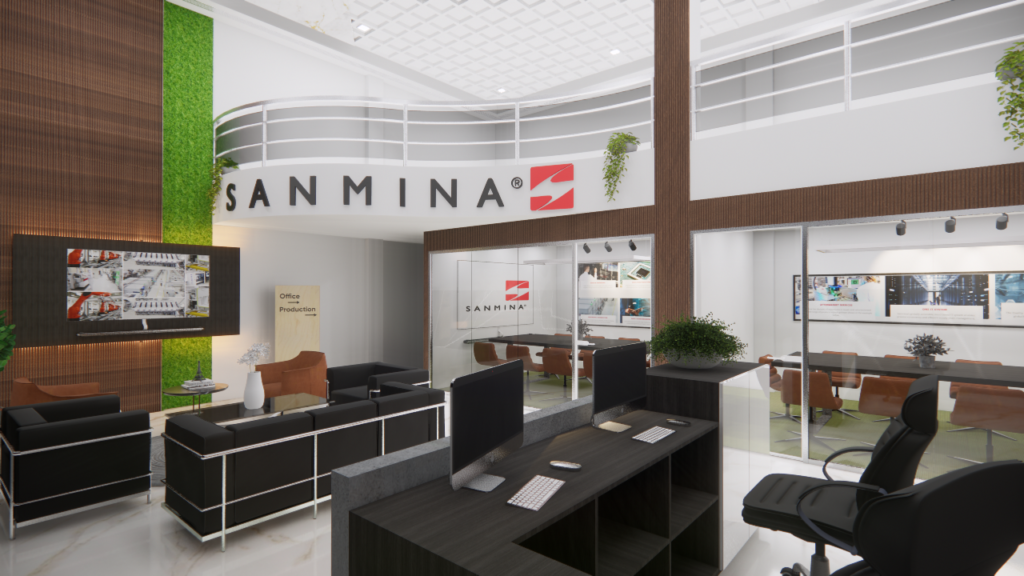What comes under Commercial Interior Design?

Creating effective and inspiring workspaces which promote productivity, teamwork, and employee well-being is made possible in large part by commercial interior design. An attractive commercial space can make a lasting impact on both customers and staff, whether it is for office buildings, retail stores, or hospitality establishments. If you are in search of the best commercial interiors?, with no doubt you can contact EPS Interior Industries.
We will go over important ideas, design factors, and current trends in this comprehensive guide on commercial interior design to help you turn your workspace into a dynamic encouraging place.
The term “commercial interior design” describes the architecture and interior design work done in a wide range of business settings, including restaurants, retail stores, and workplaces. These spaces are arranged to provide maximum functionality and security, enabling the business to operate as usual.
Understanding Commercial Interior Design’s Importance
Design’s Power: Commercial spaces that are well-designed have a substantial impact on staff morale, productivity, and overall business success. A well-planned interior can boost workflow efficiency, employee satisfaction, and client attraction.
Representing the Brand Identity: Businesses can use commercial interior design to express their personality, culture, and brand values through their workplace. It establishes a uniform and attractive atmosphere that complements the vision and objectives of the business.
Important Ideas for Commercial Interior Design
Space Planning: Effective space design maximizes the use of available square footage. It entails identifying functional zones, traffic flow, and ergonomic factors to improve productivity and comfort.
Lighting Design: Proper lighting in commercial environments is essential for creating the right ambience, supporting visual tasks, and promoting a positive attitude. Natural light, task lighting, and ambient lighting can all help to improve the overall atmosphere.
Color Psychology: Colors have a significant effect on perception, productivity, and mood. The entire experience of the area can be pleasantly impacted by selecting color schemes that are appropriate for the type of work being done and the atmosphere that is asked for.
For more information about Commercial interior designers in Chennai, you can visit our website. These designers are skilled in maintaining safety and utility without forsaking aesthetics or style.
A Look at Design for Various Commercial Spaces
Office Spaces: Considerations including open-plan layouts, ergonomic furniture, breakout sections, collaborative areas, and integrating technology for smooth connectivity are important when designing practical and inspirational office spaces.
Retail Spaces: Retail spaces need to pay close attention to customer flow, product displays, store layout, visual merchandising, and generating memorable experiences that increase sales.
Hospitality Spaces: When designing a hospitality space, the focus is on flow, aesthetics, utility, and visitor experience to create a warm and comfortable atmosphere.
Current Interior Design Trends for Commercial Spaces
Biophilic Design: Incorporating natural elements—like plants, organic materials, and scenic views—improves wellbeing, lowers stress levels, and promotes a sense of connectedness to the surrounding environment.
Flexible Workspaces: Multipurpose, adaptable workplaces that are simple to rearrange to suit various work styles and activities are becoming more and more common.
Sustainability: Using sustainable design techniques, eco-friendly materials, and energy-efficient lighting is in line with the increasing emphasis on environmental responsibility.
You may find many skilled and experienced interior design companies online that are recognized for specializing in both residential and business interior design. The designers at EPS Interiors are highly qualified to guarantee, that your needs will be met in a way that will both enhance your workspace and help your business grow.
Who Uses Interior Design for Commercial Spaces, Exactly?
Interior design services for commercial spaces are used by many different types of enterprises and sectors. The following are the widely used ones:
Retail: To create aesthetically pleasing and useful rooms that inspire customers to make a purchase, retail enterprises use commercial interior design services. Customer satisfaction and sales can both be enhanced by a well-designed retail environment.
Hospitality: Commercial space interior design services are used by hotels, restaurants, and other hospitality-related enterprises to provide hospitable and warm environments for visitors. A well-designed hospitality area can improve client happiness and a company’s brand image.
Corporate: Businesses use commercial interior design services to give their staff members comfortable, effective workspaces. A well-designed office can boost productivity and staff morale while improving the company’s reputation.
Healthcare: Commercial interior design services are used by healthcare facilities to create serene and cozy spaces for both employees and patients. Both staff satisfaction and patient outcomes can be enhanced by well-designed healthcare facilities.
Education: Commercial space interior design services are used by educational institutions to create surroundings that are motivating and engaging for their pupils. Both student engagement and outcomes can be enhanced by well-designed learning environments.
The Commercial Interior Design Phases
The interior design process for a commercial facility usually consists of multiple stages, such as:
Analysis and programming: During this phase, data concerning the project, such as the client’s requirements and objectives, the budget, and the schedule, are gathered.
Design conception: Based on the data obtained during the programming and analysis phase, the first design concepts are created during this phase.
Design concept: In this stage, the design concepts are refined and materials, colors, and finishes are chosen.
Construction documentation: This phase consists of creating detailed drawings and specifications that will be used by contractors and other professionals to implement the design.
Construction management: This phase manages the building process to verify that the design is performed accurately and on time.
Do not hesitate to get in touch with us if you need support from a commercial interior designer. EPS Interior Industries, our team, is here to help you with every step of the process, whether it’s design, building, or space planning.
